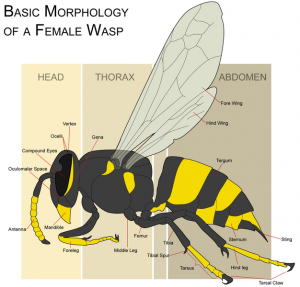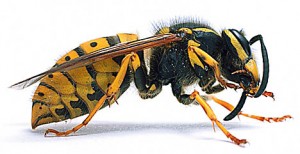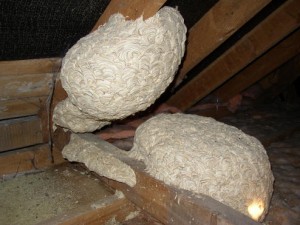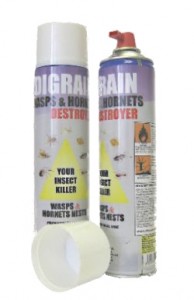‘Wasp Invasion On It’s Way’ Warn Experts
November 8, 2012 by admin
Filed under Pest Control
The term wasp is typically defined as any insect of the order Hymenoptera and suborder Apocrita that is neither a bee nor an ant. Almost every pest insect species has at least one wasp species that preys upon it or parasitizes it, making wasps critically important in natural control of their numbers, or natural biocontrol. Parasitic wasps are increasingly used in agricultural pest control as they prey mostly on pest insects and have little impact on crops.
https://en.wikipedia.org/wiki/Wasp
Diet
Generally, wasps are parasites or parasitoids as larvae, and feed on nectar only as adults. Many wasps are predatory, using other insects (often paralyzed) as food for their larvae. In parasitic species, the first meals are almost always derived from the host in which the larvae grow.
Several types of social wasps are omnivorous, feeding on a variety of fallen fruit, nectar, and carrion. Some of these social wasps, such as yellow jackets, may scavenge for dead insects to provide for their young. In many social species, the larvae provide sweet secretions that are consumed by adults. Adult male wasps sometimes visit flowers to obtain nectar to feed on in much the same manner as honey bees. Occasionally, some species, such as yellow jackets and, especially, hornets, invade honey bee nests and steal honey and/or brood.
Although 11 species of true wasp are found in Europe, only two, the Common Wasp (Vespula Vulgaris) and the German Wasp (Vespula Germanica) are important as pest species. Both species overwinter as queens, the Common Wasp usually hibernates in buildings and the German Wasp typically overwintering under the bark of trees.
In spring the overwintering queens leave their hibernating quarters to seek nesting sites which could be in a hole in the ground, a hollow tree or artificial structures such as eaves, lofts and attics, garden sheds etc. The queen starts to build her nest with a papery material that she makes by chewing small pieces of wood mixed with saliva; this is known as Wasp paper. She will raise the first few workers by her own efforts and those workers will then commence the enlargement of the nest and caring for the immature Wasps to follow. Nest construction starts in earnest in June and will reach its maximum in size in September, when 5 – 10,000 workers may be present. These workers will forage for food up to 400 metres from the nest. The size of wasp colonies will vary from year to year, the severity of the previous winter is probably the key factor. In the Autumn the young queens mate and leave the nest to hibernate, the rest of the nest dies out and the nest is never used again.
Individuals react differently to being stung by wasps; some are hardly affected, others suffer considerable pain and swelling and a few become seriously allergic to being stung, which in some cases results in sudden death due to anaphylactic shock.
Control
It is always advisable to let a professional Pest Control Officer deal with a Wasp nest for the reasons mentioned above. An insecticide will be used to cover the entrance to the nest. Returning wasps will carry the insecticide into the heart of the nest and within a few hours all wasps should be dead. Finding the nest is not always easy but following the flight pattern from a source of food could prove helpful. If a householder elects to treat the nest themselves, treatment should be carried out early or late in the day when the Wasp activity is at a minimum. Hardware shops and garden centres will sell insecticide sprays and powders for the treatment of Wasps but care must be taken to follow the instructions on the label.



